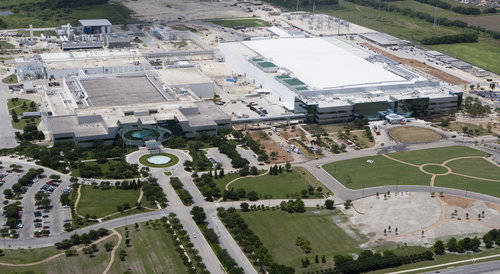Samsung’s Austin plant stops first after establishment
NXP, Infineon, etc. also stop nearby
 viewer
viewer
Samsung Electronics’ Austin semiconductor plant has been shut down due to a power shortage caused by a local cold wave and heavy snow. This is in response to a request for large-scale power outages and power shortages caused by the severe cold by the city of Austin to ask large corporations such as Samsung Electronics, NXP in the Netherlands, and Infineon in Germany to shut down the plant. Samsung Electronics, which was considering the expansion of the factory here, had increased concerns ahead of additional investment.
According to related industry and foreign media on the 17th, Austin Energy reported on the difficulty of supplying power to companies using industrial power on the 16th (local time) and requested a factory closure or closure. Accordingly, the consortium’Coalition for Clean, Acceptable and Reliable Energy (CARE)’, which negotiated on behalf of companies using local power, said, “In response to the serious situation of the Texas power grid, Austin Energy “We asked for the plant to be shut down.”
Plant shutdown at state request
According to this decision, Samsung Electronics’ Austin semiconductor plant stopped operating at 4 pm on the 16th. Samsung Electronics is currently producing chips such as Intel, Tesla, and IBM at its Austin plant at 14 nm (nm, 1 nm is 1 billionth of a meter) and 28 nm lines. An official of Samsung Electronics said, “The state government has announced a policy to temporarily suspend the supply of industrial electricity due to a problem in the power supply chain.” We are waiting for the power supply network to be restored.”
It is the first time since the establishment of the factory in 1998 that the Samsung Electronics Austin semiconductor plant has been shut down due to power shortages. Samsung Electronics is discussing with the state government to resume production, but it is difficult to accurately predict when power emergencies such as circular power outages will be resolved due to the poor supply and demand of local power due to the severe cold and heavy snow. The longer the plant is stopped, the more inevitable the damage will be. Earlier, when a power outage occurred for less than 30 minutes at the Samsung Electronics Pyeongtaek plant in March 2018, the damage was about 50 billion won. In December 2019, when the Hwaseong plant was shut down, it suffered billions of won.
For this reason, there are also voices in the industry that this could reconsider Austin, which was a promising candidate for plant expansion. Since the basic condition of semiconductor production is a stable power supply, the unprecedented collapse of the statewide power supply chain could be read as a significant danger signal for companies. In particular, semiconductor production processes based on ultrafine processes can cause large-scale property damage even during temporary earthquakes or power outages. In addition, as local media predict that normal power supply may be difficult even after the 20th of this month, Samsung Electronics’ worries about choosing a factory site are expected to deepen. Earlier, Samsung Electronics reportedly requested a tax benefit of around $1 billion in conditions of an investment of 17 billion dollars (about 18 trillion won) in the Austin area.
Blackout,’Austin Factory Expansion’ to a New Problem
In addition, NXP’s production facilities, which focus on automotive semiconductors, have also been shut down due to this power outage. NXP’s Austin plant, the world’s number one automotive semiconductor company, produces microcontrollers (MCUs), power semiconductors, and sensors, which are in short supply due to insufficient supply. As a result, it is expected that the global semiconductor supply and demand shortage, starting with automotive semiconductors and spreading to smartphones and TVs, will further entangle.
Meanwhile, the United States is suffering from a cold wave from the Arctic. Among them, Texas suffered the most damage, including power cuts to 4.3 million households. Currently, electricity is cut off to 5.5 million households in 18 states, including Oregon, Kentucky, West Virginia, and Virginia. Texas, which is experiencing the most severe power shortage, is mainly supplying power to essential facilities such as hospitals, and the rest of the area has undergone circular blackouts.
/ Reporter Lee Su-min [email protected]
< 저작권자 ⓒ 서울경제, 무단 전재 및 재배포 금지 >
